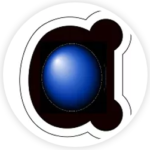The ramp-up of interstellar medium enrichment at z > 4
Jorissen, A., Smith, V. V. & Lambert, D. L. Fluorine in red giant stars: evidence for nucleosynthesis. Astron. Astrophys. 261, 164–187 (1992).
Kobayashi, C., Karakas, A. I. & Umeda, H. The evolution of isotope ratios in the Milky Way Galaxy. Mon. Not. R. Astron. Soc. 414, 3231–3250 (2011).
Cunha, K., Smith, V. V., Lambert, D. L. & Hinkle, K. H. Fluorine abundances in the Large Magellanic Cloud and ω Centauri: evidence for neutrino nucleosynthesis? Astron. J. 126, 1305–1311 (2003).
Forestini, M., Goriely, S., Jorissen, A. & Arnould, M. Fluorine production in thermal pulses on the asymptotic giant branch. Astron. Astrophys. 261, 157–163 (1992).
Woosley, S. E. & Haxton, W. C. Supernova neutrinos, neutral currents and the origin of fluorine. Nature 334, 45–47 (1988).
Meynet, G. & Arnould, M. Synthesis of 19F in Wolf–Rayet stars. Astron. Astrophys. 355, 176–180 (2000).
Renda, A. et al. On the origin of fluorine in the Milky Way. Mon. Not. R. Astron. Soc. 354, 575–580 (2004).
Spitoni, E., Matteucci, F., Jönsson, H., Ryde, N. & Romano, D. Fluorine in the solar neighborhood: chemical evolution models. Astron. Astrophys. 612, A16 (2018).
Grisoni, V. et al. Fluorine in the solar neighbourhood: modelling the Galactic thick and thin discs. Mon. Not. R. Astron. Soc. 498, 1252–1258 (2020).
Kobayashi, C. et al. Evolution of fluorine in the Galaxy with the ν-process. Astrophys. J. Lett. 739, L57 (2011).
Fudamoto, Y. et al. The most distant, luminous, dusty star-forming galaxies: redshifts from NOEMA and ALMA spectral scans. Mon. Not. R. Astron. Soc. 472, 2028–2041 (2017).
Rocca-Volmerange, B., Le Borgne, D., De Breuck, C., Fioc, M. & Moy, E. The radio galaxy K–z relation: the 1012 M⊙ mass limit. Masses of galaxies from the LK luminosity, up to z > 4. Astron. Astrophys. 415, 931–940 (2004).
Monje, R. R. et al. Hydrogen fluoride toward luminous nearby galaxies: NGC 253 and NGC 4945. Astrophys. J. 785, 22 (2014).
Lehnert, M. D. et al. Etching glass in the early Universe: luminous HF and H2O emission in a QSO–SMG pair at z = 4.7. Astron. Astrophys. 641, A124 (2020).
Spilker, J. S. et al. Fast molecular outflow from a dusty star-forming galaxy in the early Universe. Science 361, 1016–1019 (2018).
Neufeld, D. A., Wolfire, M. G. & Schilke, P. The chemistry of fluorine-bearing molecules in diffuse and dense interstellar gas clouds. Astrophys. J. 628, 260–274 (2005).
Sonnentrucker, P. et al. Detection of hydrogen fluoride absorption in diffuse molecular clouds with Herschel/HIFI: an ubiquitous tracer of molecular gas. Astron. Astrophys. 521, L12 (2010).
Emprechtinger, M. et al. Hydrogen fluoride in high-mass star-forming regions. Astrophys. J. 756, 136 (2012).
Kavak, Ü., van der Tak, F. F. S., Tielens, A. G. G. M. & Shipman, R. F. Origin of hydrogen fluoride emission in the Orion Bar. An excellent tracer for CO-dark H2 gas clouds. Astron. Astrophys. 631, A117 (2019).
Gerin, M., Neufeld, D. A. & Goicoechea, J. R. Interstellar hydrides. Annu. Rev. Astron. Astrophys. 54, 181–225 (2016).
Neufeld, D. A., Zmuidzinas, J., Schilke, P. & Phillips, T. G. Discovery of interstellar hydrogen fluoride. Astrophys. J. 488, L141–L144 (1997).
Kawaguchi, K. et al. Detection of HF toward PKS 1830-211, search for interstellar H2F+, and laboratory study of H2F+ and H2Cl+ dissociative recombination. Astrophys. J. 822, 115 (2016).
Monje, R. R. et al. Discovery of hydrogen fluoride in the Cloverleaf quasar at z = 2.56. Astrophys. J. Lett. 742, L21 (2011).
Papadopoulos, P. P., Thi, W. F. & Viti, S. C i lines as tracers of molecular gas, and their prospects at high redshifts. Mon. Not. R. Astron. Soc. 351, 147–160 (2004).
Asplund, M., Grevesse, N., Sauval, A. J. & Scott, P. The chemical composition of the Sun. Annu. Rev. Astron. Astrophys. 47, 481–522 (2009).
Indriolo, N., Neufeld, D. A., Seifahrt, A. & Richter, M. J. Direct determination of the HF/H2 abundance ratio in interstellar gas. Astrophys. J. 764, 188 (2013).
Pereira-Santaella, M. et al. Herschel/SPIRE submillimeter spectra of local active galaxies. Astrophys. J. 768, 55 (2013).
Neufeld, D. A. et al. Strong absorption by interstellar hydrogen fluoride: Herschel/HIFI observations of the sight-line to G10.6-0.4 (W31C). Astron. Astrophys. 518, L108 (2010).
Tacconi, L. J. et al. PHIBSS: unified scaling relations of gas depletion time and molecular gas fractions. Astrophys. J. 853, 179 (2018).
Lugaro, M. et al. Reaction rate uncertainties and the production of 19F in asymptotic giant branch stars. Astrophys. J. 615, 934–946 (2004).
Kobayashi, C., Karakas, A. I. & Lugaro, M. The origin of elements from carbon to uranium. Astrophys. J. 900, 179 (2020).
Kobayashi, C., Tsujimoto, T. & Nomoto, K. The history of the cosmic supernova rate derived from the evolution of the host galaxies. Astrophys. J. 539, 26–38 (2000).
Limongi, M. & Chieffi, A. Presupernova evolution and explosive nucleosynthesis of rotating massive stars in the metallicity range −3 ≤ [Fe/H] ≤ 0. Astrophys. J. Suppl. Ser. 237, 13 (2018).
Ramírez-Agudelo, O. H. et al. The VLT-FLAMES Tarantula Survey. XII. Rotational velocities of the single O-type stars. Astron. Astrophys. 560, A29 (2013).
Wiescher, M., Gorres, J., Thielemann, F. K. & Ritter, H. Explosive hydrogen burning in novae. Astron. Astrophys. 160, 56–72 (1986).
Ivison, R. J. et al. The space density of luminous dusty star-forming galaxies at z > 4: SCUBA-2 and LABOCA imaging of ultrared galaxies from Herschel-ATLAS. Astrophys. J. 832, 78 (2016).
Eales, S. et al. The Herschel ATLAS. Publ. Astron. Soc. Pac. 122, 499–515 (2010).
Griffin, M. J. et al. The Herschel-SPIRE instrument and its in-flight performance. Astron. Astrophys. 518, L3 (2010).
Pilbratt, G. L. et al. Herschel Space Observatory. An ESA facility for far-infrared and submillimetre astronomy. Astron. Astrophys. 518, L1 (2010).
Cox, P. et al. Gas and dust in a submillimeter galaxy at z = 4.24 from the Herschel Atlas. Astrophys. J. 740, 63 (2011).
McMullin, J. P., Waters, B., Schiebel, D., Young, W. & Golap, K. CASA architecture and applications. In Shaw, R. A. et al. (eds.) Astronomical Data Analysis Software and Systems XVI 127 (Astronomical Society of the Pacific Conference Series Vol. 376, 2007).
Cornwell, T. J. Multiscale CLEAN deconvolution of radio synthesis images. IEEE J. Sel. Top. Signal Process. 2, 793–801 (2008).
Condon, J. J. Errors in elliptical Gaussian fits. Publ. Astron. Soc. Pac. 109, 166–172 (1997).
Martí-Vidal, I., Pérez-Torres, M. A. & Lobanov, A. P. Over-resolution of compact sources in interferometric observations. Astron. Astrophys. 541, A135 (2012).
Boquien, M. et al. CIGALE: a Python Code Investigating GALaxy Emission. Astron. Astrophys. 622, A103 (2019).
Kovács, A. et al. SHARC-2 350 μm observations of distant submillimeter-selected galaxies. Astrophys. J. 650, 592–603 (2006).
Gordon, K. D. et al. Determining dust temperatures and masses in the Herschel era: the importance of observations longward of 200 micron. Astron. Astrophys. 518, L89 (2010).
Kennicutt, J. & Robert, C. The global Schmidt law in star-forming galaxies. Astrophys. J. 498, 541–552 (1998).
Kroupa, P. On the variation of the initial mass function. Mon. Not. R. Astron. Soc. 322, 231–246 (2001).
Papadopoulos, P. P. & Greve, T. R. C i emission in ultraluminous infrared galaxies as a molecular gas mass tracer. Astrophys. J. 615, L29–L32 (2004).
Wagg, J., Wilner, D. J., Neri, R., Downes, D. & Wiklind, T. Atomic carbon in APM 08279+5255 at z = 3.91. Astrophys. J. 651, 46–50 (2006).
Weiß, A., Henkel, C., Downes, D. & Walter, F. Gas and dust in the Cloverleaf quasar at redshift 2.5. Astron. Astrophys. 409, L41–L45 (2003).
Bothwell, M. S. et al. ALMA observations of atomic carbon in z ~ 4 dusty star-forming galaxies. Mon. Not. R. Astron. Soc. 466, 2825–2841 (2017).
Jiao, Q. et al. Neutral carbon emission in luminous infrared galaxies: the [C i] lines as total molecular gas tracers. Astrophys. J. Lett. 840, L18 (2017).
Daddi, E. et al. Different star formation laws for disks versus starbursts at low and high redshifts. Astrophys. J. Lett. 714, L118–L122 (2010).
Lagos, C. del P. et al. Molecular hydrogen abundances of galaxies in the EAGLE simulations. Mon. Not. R. Astron. Soc. 452, 3815–3837 (2015).
Solomon, P. M. & Vanden Bout, P. A. Molecular gas at high redshift. Annu. Rev. Astron. Astrophys. 43, 677–725 (2005).
da Cunha, E. et al. On the effect of the cosmic microwave background in high-redshift (sub-)millimeter observations. Astrophys. J. 766, 13 (2013).
Ojha, R. et al. AST/RO observations of atomic carbon near the galactic center. Astrophys. J. 548, 253–257 (2001).
Ikeda, M., Oka, T., Tatematsu, K., Sekimoto, Y. & Yamamoto, S. The distribution of atomic carbon in the Orion Giant Molecular Cloud 1. Astrophys. J. Suppl. Ser. 139, 467–485 (2002).
González-Alfonso, E. et al. Molecular outflows in local ULIRGs: energetics from multitransition OH analysis. Astrophys. J. 836, 11 (2017).
González-Alfonso, E., Fischer, J., Aalto, S. & Falstad, N. Modeling the H2O submillimeter emission in extragalactic sources. Astron. Astrophys. 567, A91 (2014).
Planck Collaborationet al. Planck 2018 results. VI. Cosmological parameters. Astron. Astrophys. 641, A6 (2020).
Palacios, A., Arnould, M. & Meynet, G. The thermonuclear production of 19F by Wolf–Rayet stars revisited. Astron. Astrophys. 443, 243–250 (2005).
Prantzos, N., Abia, C., Limongi, M., Chieffi, A. & Cristallo, S. Chemical evolution with rotating massive star yields—I. The solar neighbourhood and the s-process elements. Mon. Not. R. Astron. Soc. 476, 3432–3459 (2018).
Jönsson, H. et al. Chemical evolution of fluorine in the bulge. High-resolution K-band spectra of giants in three fields. Astron. Astrophys. 564, A122 (2014).
Hezaveh, Y. D. et al. ALMA observations of SPT-discovered, strongly lensed, dusty, star-forming galaxies. Astrophys. J. 767, 132 (2013).
Spilker, J. S. et al. ALMA imaging and gravitational lens models of South Pole Telescope—selected dusty, star-forming galaxies at high redshifts. Astrophys. J. 826, 112 (2016).
van der Wiel, M. H. D., Naylor, D. A., Makiwa, G., Satta, M. & Abergel, A. Three-dimensional distribution of hydrogen fluoride gas toward NGC 6334 I and I(N). Astron. Astrophys. 593, A37 (2016).
Rodgers, S. D. & Charnley, S. B. Chemical evolution in protostellar envelopes: cocoon chemistry. Astrophys. J. 585, 355–371 (2003).
Jørgensen, J. K., Schöier, F. L. & van Dishoeck, E. F. Molecular freeze-out as a tracer of the thermal and dynamical evolution of pre- and protostellar cores. Astron. Astrophys. 435, 177–182 (2005).
Rangwala, N. et al. Observations of Arp 220 using Herschel-SPIRE: an unprecedented view of the molecular gas in an extreme star formation environment. Astrophys. J. 743, 94 (2011).
Pickett, H. M. et al. Submillimeter, millimeter and microwave spectral line catalog. J. Quant. Spectrosc. Radiat. Transf. 60, 883–890 (1998).
Phillips, T. G. et al. Herschel observations of EXtra-Ordinary Sources (HEXOS): detection of hydrogen fluoride in absorption towards Orion KL. Astron. Astrophys. 518, L109 (2010).
van der Werf, P. P. et al. Black hole accretion and star formation as drivers of gas excitation and chemistry in Markarian 231. Astron. Astrophys. 518, L42 (2010).
Agúndez, M. et al. HIFI detection of hydrogen fluoride in the carbon star envelope IRC +10216. Astron. Astrophys. 533, L6 (2011).
van der Tak, F. F. S. et al. Detection of HF emission from the Orion Bar. Astron. Astrophys. 537, L10 (2012).
Kamenetzky, J. et al. Herschel-SPIRE imaging spectroscopy of molecular gas in M82. Astrophys. J. 753, 70 (2012).
Lu, N. et al. A Herschel Space Observatory spectral line survey of local luminous infrared galaxies from 194 to 671 microns. Astrophys. J. Suppl. Ser. 230, 1 (2017).
Pérez-Beaupuits, J. P. et al. A thorough view of the nuclear region of NGC 253: combined Herschel, SOFIA, and APEX data set. Astrophys. J. 860, 23 (2018).
Try Adsterra Earnings, it’s 100% Authentic to make money more and more.

More Story on Source:
*here*
The ramp-up of interstellar medium enrichment at z > 4
Published By





